|
Mark Tennant
|
|||||||||||||
|
Mark Tennant received his Bachelor of Fine Arts degree from the Maryland Institute College of Art and his Master of Fine Arts degree from the New York Academy of Art. He had not decided what he wanted to study when he entered the Maryland Institute; he only knew that he wanted to paint (Tennant 2004). When he saw Joseph Sheppard’s work in the faculty art show, however, he knew right away that he wanted to work with Sheppard. Sheppard’s drawing technique and careful attention to anatomy appealed to Tennant. In addition to teaching Tennant the fundamentals of drawing, painting, and anatomy, Sheppard also took Tennant to museums where he could learn about art history and painting techniques by studying the work of the old masters. Tennant said that this is one of the most valuable lessons he’s learned from Sheppard. Today, Tennant continues to visit the museums of Europe, especially the Louvre Museum, where he copies paintings by such master artists as Raphael Sanzio, Jean Siméon Chardin, François Boucher, and Jean-Baptiste-Camille Corot. Tennant’s work is most influenced by the French paintings of the first half of the 19th century, particularly the art that was produced in Paris just prior to the impressionist movement. Tennant said that he is inspired by French realists, such as Jean-Désiré-Gustave Courbet, Jean Francois Millet, Honoré-Victorin Daumier, as well as by French romanticists such as Eugène Delacroix. Tennant admires the art produced during this period, he said, because “it seems to be modern, but maintains principles of correct drawing and value.” The current focus of Tennant’s artwork is figurative painting, and he strives to create a thoughtful, quiet mood in his compositions. Natasha Karpinskaia (2002), a New York–based art critic and art historian, wrote, “Looking at Mark Tennant’s compositions, we cannot help admiring a beautiful flowing line of the body, his elegant curving shapes and graceful fluid forms. His whole art is about finding beauty in life and rendering it on his canvases beauty as a definite object or person, as well as beauty as an abstract notion.” Also a landscape artist, Tennant especially enjoys painting the views from Parisian hotel windows on his frequent visits to the city. About Tennant’s landscapes, Karpinskaia (2002) wrote, “Tennant often paints his landscapes en plein air, only touching them up slightly afterwards in his studio. This explains why they have this unbelievable freshness of the first impression. Compositionally, his works are classically organized and reveal the artist’s academic training and great mastery of his medium.” Tennant has taught art for 30 years, first as a private art instructor, then at the graduate school of the Academy of Art University in San Francisco. Tennant has been an instructor at the Academy for six years, and he currently teaches graduate figure drawing and figure painting courses. As a teacher, he emphasizes the principles he learned from Sheppard proportion, value, and drawing from life (Tennant 2004). Tennant said that his art and his teaching are connected and that his classes are a learning experience for him, as well as for his students. “It’s like a circle,” Tennant explained. “I give to my students, but I also get so much back from them.” Tennant has exhibited at Pepperdine University and Johns Hopkins University. His paintings reside in many private collections in the United States, including collections in New York, Los Angeles, San Francisco, and Chicago, and he is represented by Gallerie Nabokov in Paris. References Karpinskaia, Natasha. 2002. Review of Mark Tennant’s artwork. N.p. Tennant, Mark. 2004. Interview by Laura Nelson. 23 June. |
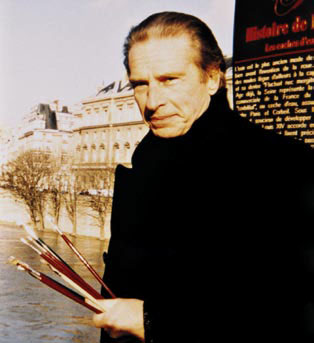 |
||||||||||||
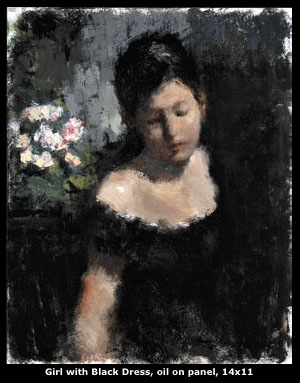 |
|||||||||||||
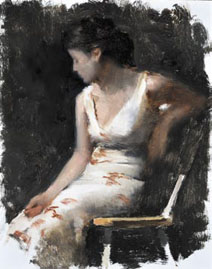 |
|||||||||||||
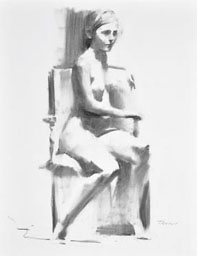 |
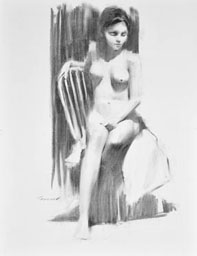 |
||||||||||||
|
Girl in a White Dress, oil on panel, 14x11
|
|||||||||||||
|
Figure Study 2, Charcoal, 24x15
|
Figure Study 1, Charcoal, 24x18
|
||||||||||||
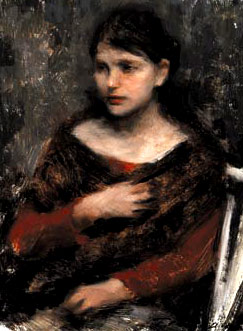 |
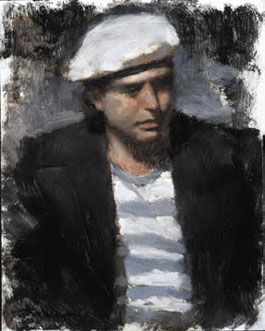 |
||||||||||||
|
Young Girl with Shawl, oil on panel, 14x11
|
Sailor, oil on panel, 14x11
|
||||||||||||